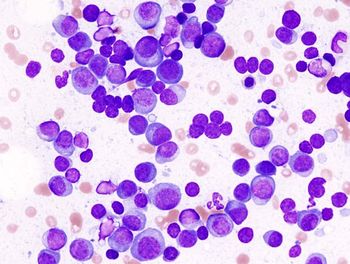
Oncology NEWS International
- Oncology NEWS International Vol 10 No 8
- Volume 10
- Issue 8
Experts Consider Statistical Issues in Designing Studies of Toxicity Modifiers
PHILADELPHIA-In designing trials of potential toxicity modifiers, consideration must be given to endpoint selection and correlation of endpoints, as well as sample size and analysis methods. Important design factors were reviewed by Charles B. Scott, PhD, associate director of quality of life research at the American College of Radiology in Philadelphia.
PHILADELPHIAIn designing trials of potential toxicity modifiers, consideration must be given to endpoint selection and correlation of endpoints, as well as sample size and analysis methods. Important design factors were reviewed by Charles B. Scott, PhD, associate director of quality of life research at the American College of Radiology in Philadelphia.
"For our toxicity endpoint, we need to be concerned about the timing of data collection," Dr. Scott said. "How often do you have the patient come back to the clinic to collect data in order to be able to compute the time of resolution? When does the toxicity occur?"
Quality of life endpoints should be assessed prior to initiation of therapy, at the peak of toxicity, and periodically in follow-up to correlate with toxicity resolution, he noted.
"The clinical endpoints we want to collect in any toxicity modifier trial are survival and tumor response, just to make sure that we don’t have an adverse effect on those clinical endpoints," Dr. Scott said.
Meaningful Differences
Consideration of the clinically meaningful difference is also important. As an example, Dr. Scott used the development of amifostine (Ethyol). This development, he said, "was built more around the maximum tolerated dose rather than that dose which leads to clinical efficacy. What is that meaningful difference? Do we look at a 25% reduction in grade 3 to 4 esophagitis? Or do we look at a 50% reduction in rectal bleeding? What is the point at which we say that it makes a true effect on the patient? How much do we have to reduce it? We can look at any type of difference statistically, but what is the level at which it’s truly meaningful?" Dr. Scott said.
Researchers expect to see correlations between interventions and endpoints. Dr. Scott said that symptom-specific quality of life may correlate with toxicity. A number of scales can be used to assess these factors, such as the Functional Assessment of Cancer Therapy, the Head and Neck Performance Status Scale, and the University of Washington Quality of Life Scale.
"Toxicity intervention studies need a placebo or control group. Categorical shift is the most efficient model, if assumptions hold. Quality of life should be considered to obtain patient perceptions of efficacy, but there may not be a correlation if there are comorbid conditions. Finally, clinical outcomes should be investigated to ensure no adverse effect," Dr. Scott said.
Articles in this issue
Newsletter
Stay up to date on recent advances in the multidisciplinary approach to cancer.

















































































